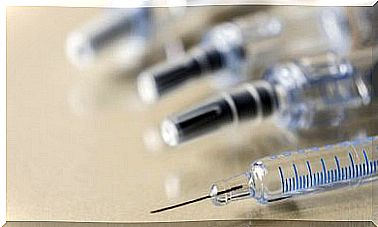Differences Between Psychosis And Schizophrenia
Psychologists and psychiatrists alike often overlook the differences between psychosis and schizophrenia, and consider them synonymous. Nothing is further from reality.
Confusing the two terms or assimilating them is a mistake that can confuse a clinical diagnosis. Given the importance of this, in this article we want to expose you to the differences between psychosis and schizophrenia.
What is psychosis?
Psychosis consists of a serious and specific alteration in the judgment of reality and the creation of a new reality. When a person is psychotic, they inaccurately evaluate their perceptions and thoughts. Makes incorrect inferences about external reality, even despite evidence to the contrary.
The concept is not applicable to minor distortions of reality or on ambiguous issues. If a depressed person underestimates his achievements, he cannot be considered psychotic.
Direct evidence of a psychotic state is the presence of delusions, hallucinations, incoherent and unintelligible language, highly disorganized behavior, and disorientation.
What is schizophrenia?
Eugen Bleuler was the first to use the concept of schizophrenia, which etymologically means splitting of the personality. Emile Kraepelin used the concept of early dementia to refer to this disorder, emphasizing the deteriorating and chronic course, where cure was not possible.
In schizophrenia the following aspects are manifested:
- Presence of psychotic symptoms during the active phase of the disease
- Deterioration of the previous level of activity.

Deterioration of previous level of activity
During the course of the disorder, activity in the work and social relations areas, as well as personal care, are impaired with respect to the level of activity prior to the onset of the disorder.
Diagnosis requires that the impairment extends to more than one type of activity. This leads to patients needing some kind of help or supervision.
Thought content
Schizophrenic patients have the presence of multiple, fragmented or strange delusions, which are not systematized and organized. Some delusions are more common in schizophrenia than in other psychotic disorders, such as the following:
- Belief that one’s own thoughts are diffused to the outside world
- That thoughts are not your own
- The thoughts have been stolen from the head
- Delusions of believing oneself controlled
Course of thought
These are the so-called formal thought disorders . The most frequent alterations are the loss of associative capacity. Ideas change from one topic to another unrelated and without the speaker noticing the disconnect.
There is incoherence and the language is inadequate in terms of quantity. Little information is transmitted due to excess abstraction or concretion, repetition, neologisms and speech blocks.
Perception
There may be the presence of various types of hallucinations, the most frequent being auditory ones, which include voices. The voices can be familiar, and their comments are often insulting, addressing the subject directly.
Tactile hallucinations are possible, with electrical, tingling, and burning sensations, as well as somatic ones. Less frequently there are visual, olfactory and taste hallucinations, which always suggest an organic mental disorder or drug intoxication.
Affectivity
The two most common alterations in schizophrenia are inappropriate and flattened affectivity. The main characteristic is that there is a serious reduction in the intensity of the expression of affections, with an expressionless face and lack of emotional reactivity. In extreme cases, the patient expresses that he no longer has feelings.
Will or motivation
There is an alteration of the activity directed towards concrete goals, which deteriorates the work activity, school or of any type. There is an inability to follow the normal course of action to completion.
There is usually difficulty in interpersonal relationships, with social withdrawal and emotional distancing being typical. The patient lives immersed within his egocentric and illogical ideas.

Psychomotor behavior
Various types of psychomotor disturbances can be generated, such as a notable decrease in reactivity to the environment, with a lack of spontaneous movements. Also the fact of maintaining rigid postures, which is called catatonic rigidity .
There are stereotyped movements, without a fixed purpose, and a motor arousal not influenced by external stimuli. Because of this, inappropriate or strange attitudes appear. Patient ignores instructions to change posture and suffers from waxy flexibility. The latter is that the limbs remain in whatever position they are placed in, even if they are uncomfortable or anti-gravity, without trying to regain the initial position when released.
Impact of the differences between psychosis and schizophrenia
The differences between psychosis and schizophrenia are striking and should not be confused in reaching a diagnosis. Each disorder needs a particular approach to come to fruition. It will always be a professional who defines the criteria and the approach plan.








